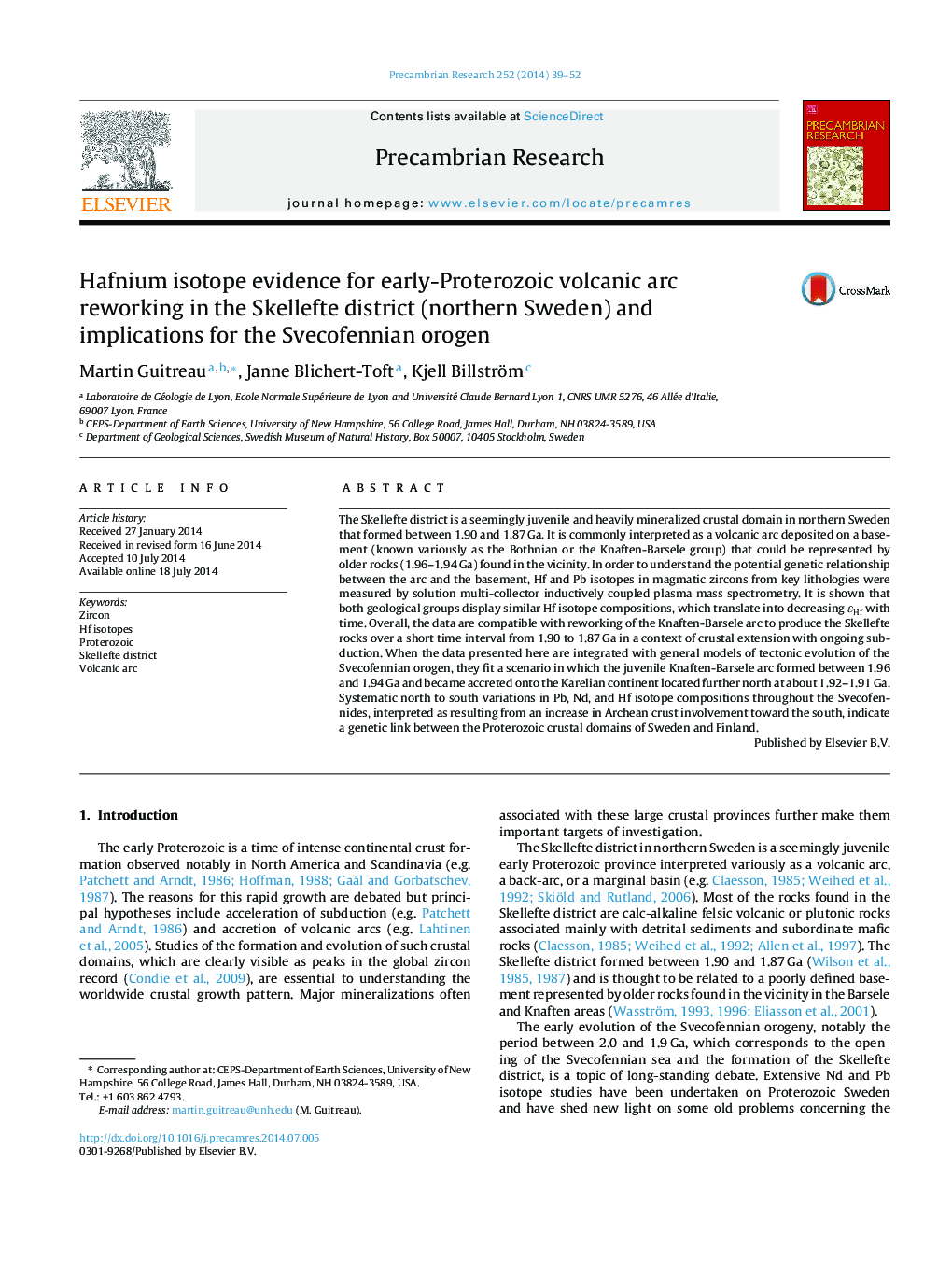| Article ID | Journal | Published Year | Pages | File Type |
|---|---|---|---|---|
| 4722945 | Precambrian Research | 2014 | 14 Pages |
Abstract
The Skellefte district is a seemingly juvenile and heavily mineralized crustal domain in northern Sweden that formed between 1.90 and 1.87Â Ga. It is commonly interpreted as a volcanic arc deposited on a basement (known variously as the Bothnian or the Knaften-Barsele group) that could be represented by older rocks (1.96-1.94Â Ga) found in the vicinity. In order to understand the potential genetic relationship between the arc and the basement, Hf and Pb isotopes in magmatic zircons from key lithologies were measured by solution multi-collector inductively coupled plasma mass spectrometry. It is shown that both geological groups display similar Hf isotope compositions, which translate into decreasing ÉHf with time. Overall, the data are compatible with reworking of the Knaften-Barsele arc to produce the Skellefte rocks over a short time interval from 1.90 to 1.87Â Ga in a context of crustal extension with ongoing subduction. When the data presented here are integrated with general models of tectonic evolution of the Svecofennian orogen, they fit a scenario in which the juvenile Knaften-Barsele arc formed between 1.96 and 1.94Â Ga and became accreted onto the Karelian continent located further north at about 1.92-1.91Â Ga. Systematic north to south variations in Pb, Nd, and Hf isotope compositions throughout the Svecofennides, interpreted as resulting from an increase in Archean crust involvement toward the south, indicate a genetic link between the Proterozoic crustal domains of Sweden and Finland.
Related Topics
Physical Sciences and Engineering
Earth and Planetary Sciences
Geochemistry and Petrology
Authors
Martin Guitreau, Janne Blichert-Toft, Kjell Billström,
